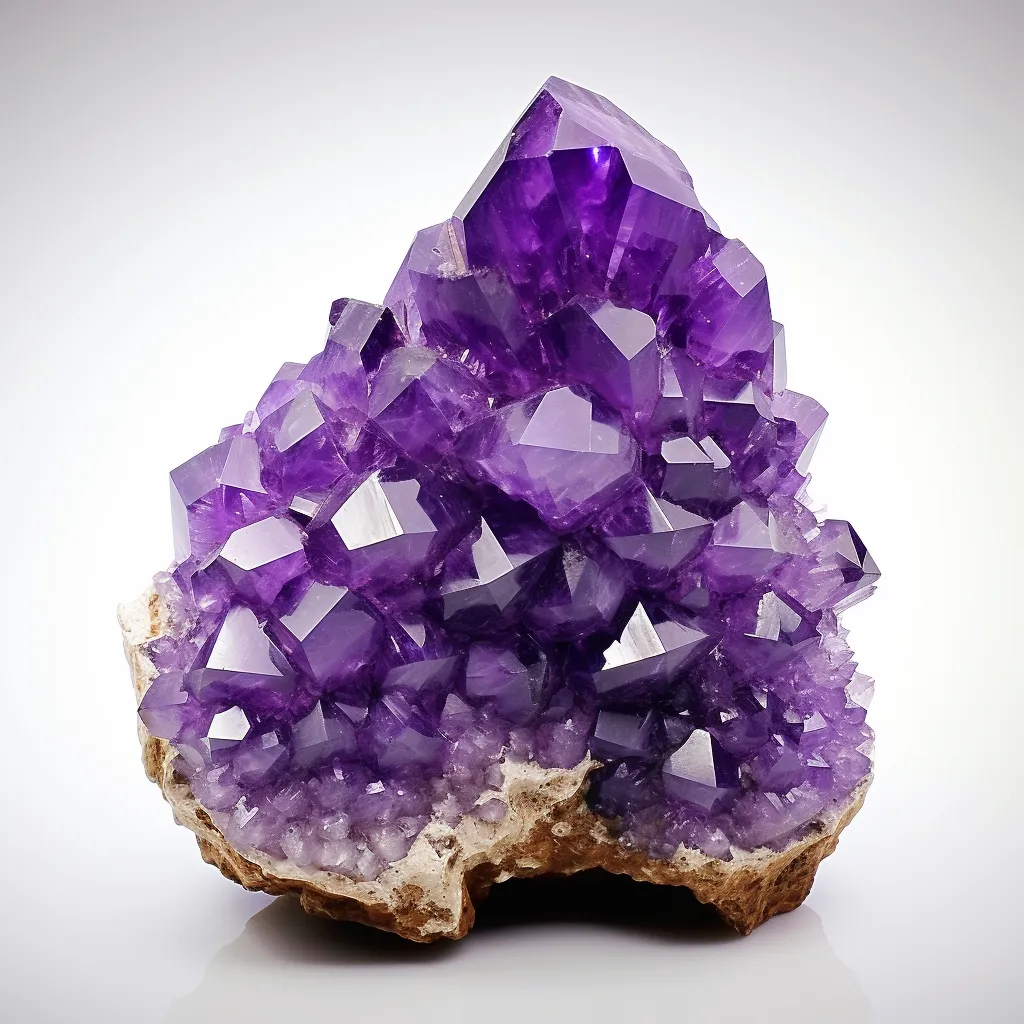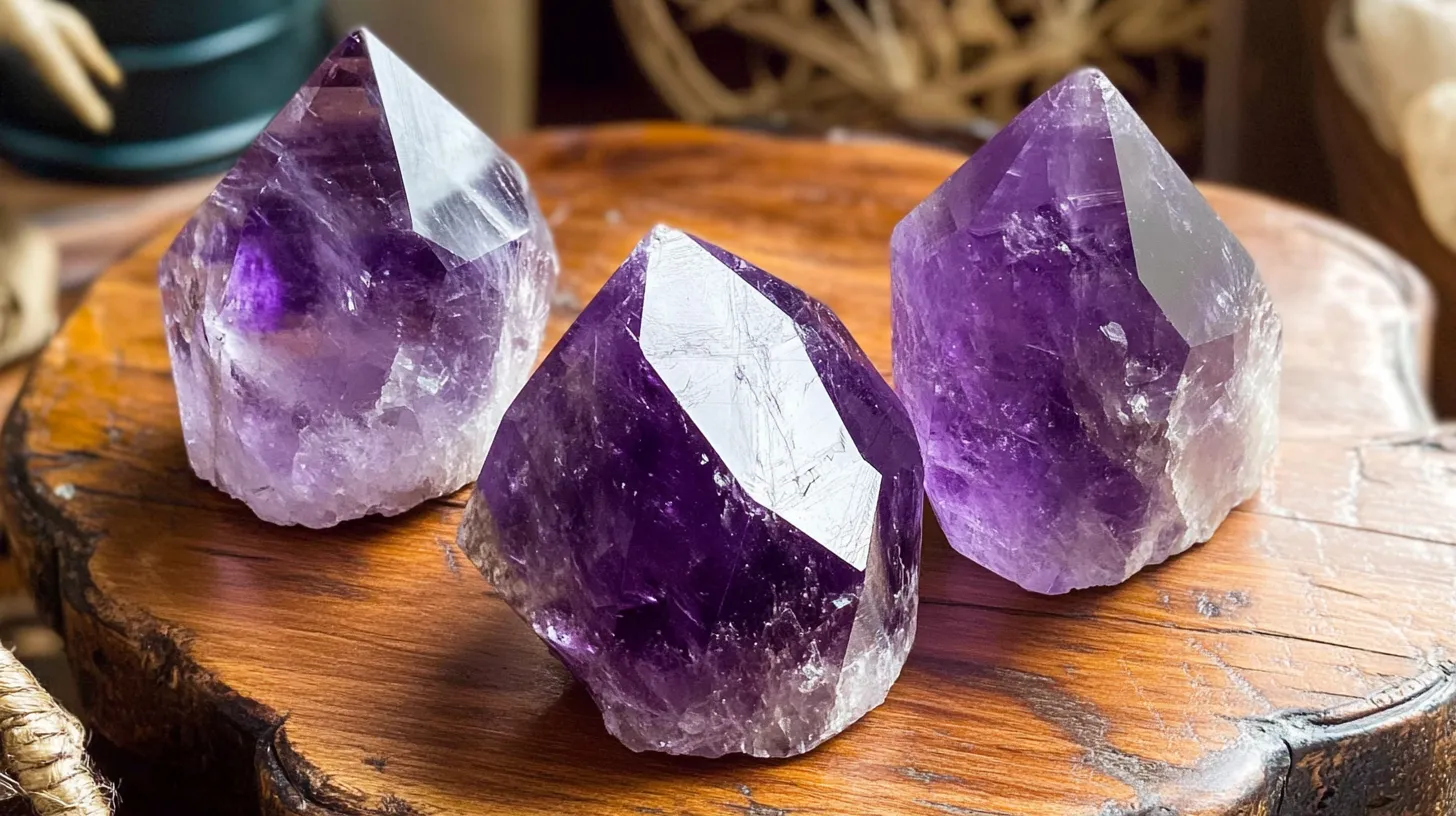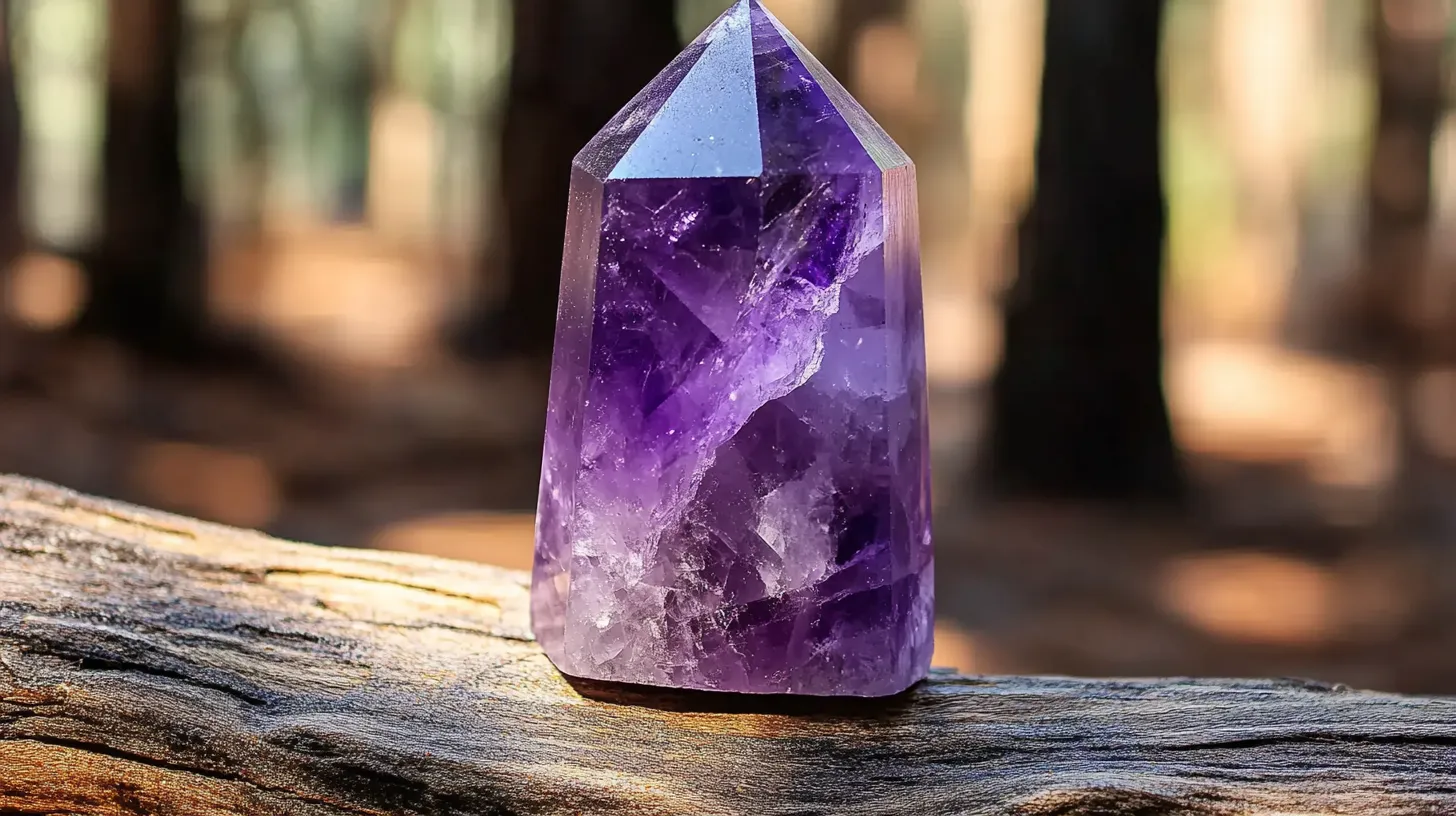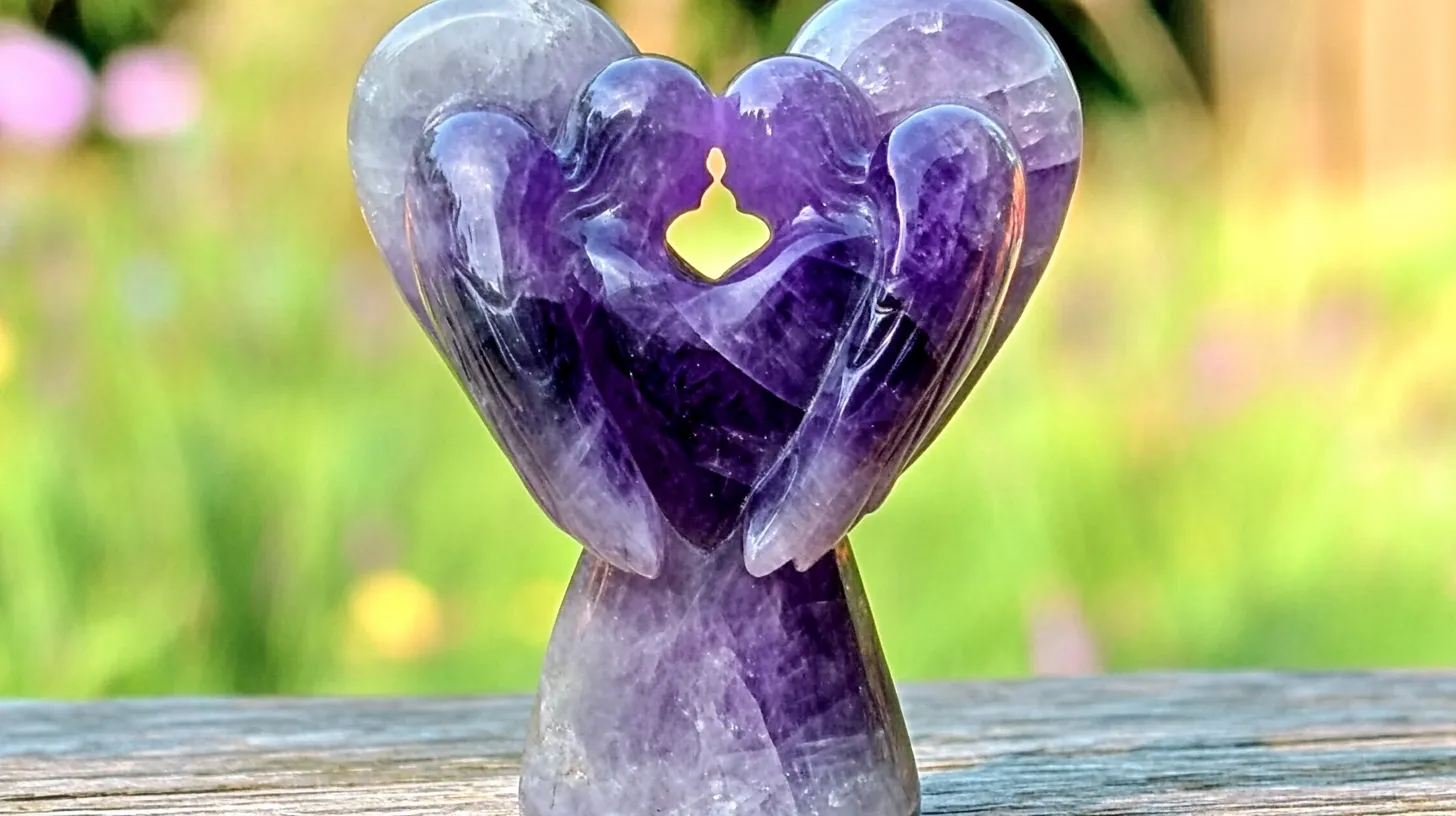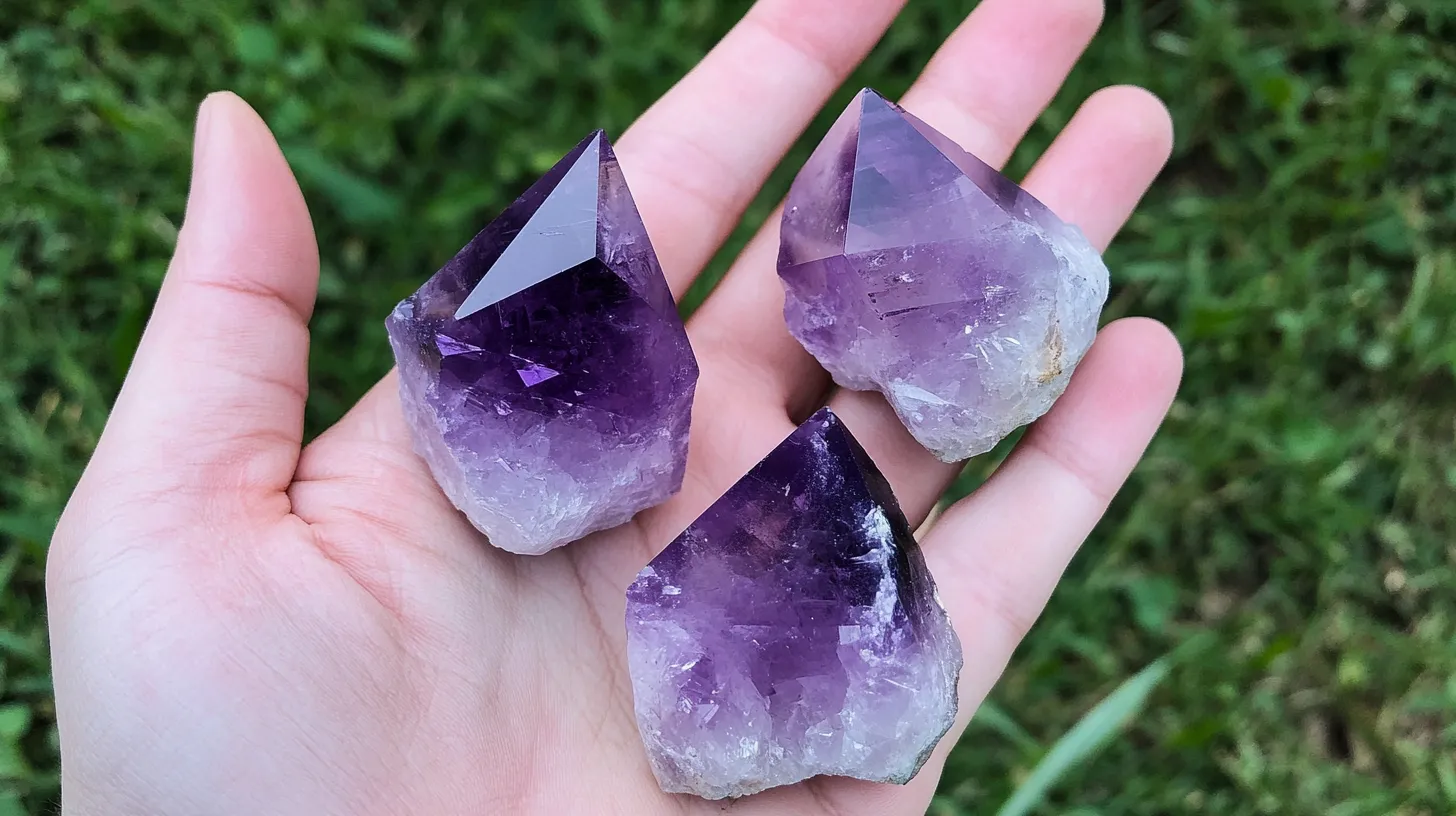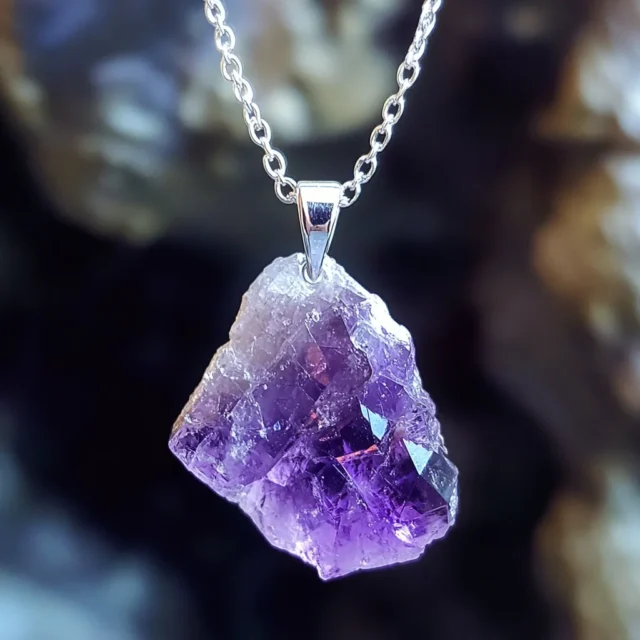

Why is purple amethyst?
One of the most fascinating gemstones, amethyst’s brilliant purple hue makes it somewhat obvious. But have you ever found out why it is purple? Why does this gemstone have such a striking colour? The response is more complicated than you might believe. It calls for physics, chemistry, and even some mythology. Let’s explore closely the chemical structure, light absorption, historical views, and more of what makes amethyst purple.

The Chemistry of Amethyst’s Colour
Fundamentally, amethyst is a kind of quartz (SiO₂), one of the most often found minerals on Earth. Amethyst distinguishes itself from ordinary quartz in that it contains natural radiation and iron. Iron contaminants replace some of the silicon atoms in the quartz crystal structure. Over millions of years, the iron undergoes complicated reactions in response to natural radiation from the nearby rocks that produce the exquisite purple hue we observe.
| Component | Role in Amethyst | Impact on Colour |
|---|---|---|
| Silicon Dioxide (SiO₂) | Primary element | Generates the crystal structure |
| Iron (Fe³⁺) | Quartz’s impurities | Responsible for the purple colour |
| Natural Radiation | Alters iron ions | Increases colour over time |
Amethyst would be clear quartz without iron. The purple hue deepens the more iron is present and the more radiation exposure it has experienced.

How Light Affects Amethyst’s Hue?
The colour of amethysts is significantly influenced by how they absorb and reflect light. The iron contaminants produce in the crystal what are known as “colour centres.” Amethyst gets its distinctive purple colour from these centres, which absorb some wavelengths of light and reflect others. Furthermore, the lighting environment affects the stone’s appearance. It may seem more vivid in the daytime, but under artificial light it may seem rather bluish or reddish.
| Light Source | Colour Perception |
|---|---|
| Sunshine | Bright purple, violet-purple |
| Fluorescent Lights | Cooler, bluesy-purple |
| Incandescent Illumination | Heated, reddish-purple |
This is the reason some individuals observe their amethyst jewellery appearing somewhat different under different lighting situations. It is scientific rather than magic!

Various Shades of Amethyst and Their Effects
Not every amethyst falls in the same purple hue. Some are pale lilac, while others are deep violet. An amethyst’s exact colour depends on several elements, including its iron content, degree of natural radiation exposure, and even its mining site.
| Shade | Context | Typical Areas |
|---|---|---|
| Deep Purple | Most valued, strong hue | Uruguay, Siberia |
| Medium Purple | Traditional amethyst shade | Brazil, Zambia |
| Light Lilac | Gentle, pastel-like hue | Bolivia, Arizona |
The best-quality amethysts usually originate from Uruguay and Siberia, where the conditions were ideal for producing rich, deep purple colours.

Heat Treatment and Colour Modification
You may find that heating amethysts alters their colour. Amethyst may lose its purple colour and turn yellow, orange, or even green at high temperatures—between 400 and 500°C. This occurs because heat disrupts the iron colour centres within the crystal. Many citrine gemstones available today are actually heat-treated amethysts. If you have an amethyst and unintentionally expose it to high heat, you should not be surprised if its colour changes!

The Functions of Symbolism and Mythology
Amethyst has long been associated with stories and folklore, beyond its scientific applications. Ancient Greeks commonly carved drinking goblets out of amethyst since they thought the stone could guard them from drunkenness and derived their name from the Greek word “amethystos,” meaning “not intoxicated.” Considered a regal gemstone in mediaeval times, it represented spiritual clarity, knowledge, and protection as well as wisdom.

Why Some Amethysts Graduate Over Time
Should you have ever kept an amethyst in direct sunlight for too long, you may have observed it fading. Long UV radiation exposure can break down the colour centres responsible for its purple hue, causing it to fade. Stow your amethyst away from direct sunlight when not in use to maintain its brilliance.

Last Notes
A perfect mix of iron contaminants, natural radiation, and light absorption produces Amethyst’s purple colour. Location, lighting, and heat are among several elements that could affect its unusual colour. One thing is clear—amethyst is among the most amazing jewels in nature, regardless of your appreciation for its beauty, scientific intricacy, or mystical qualities.

